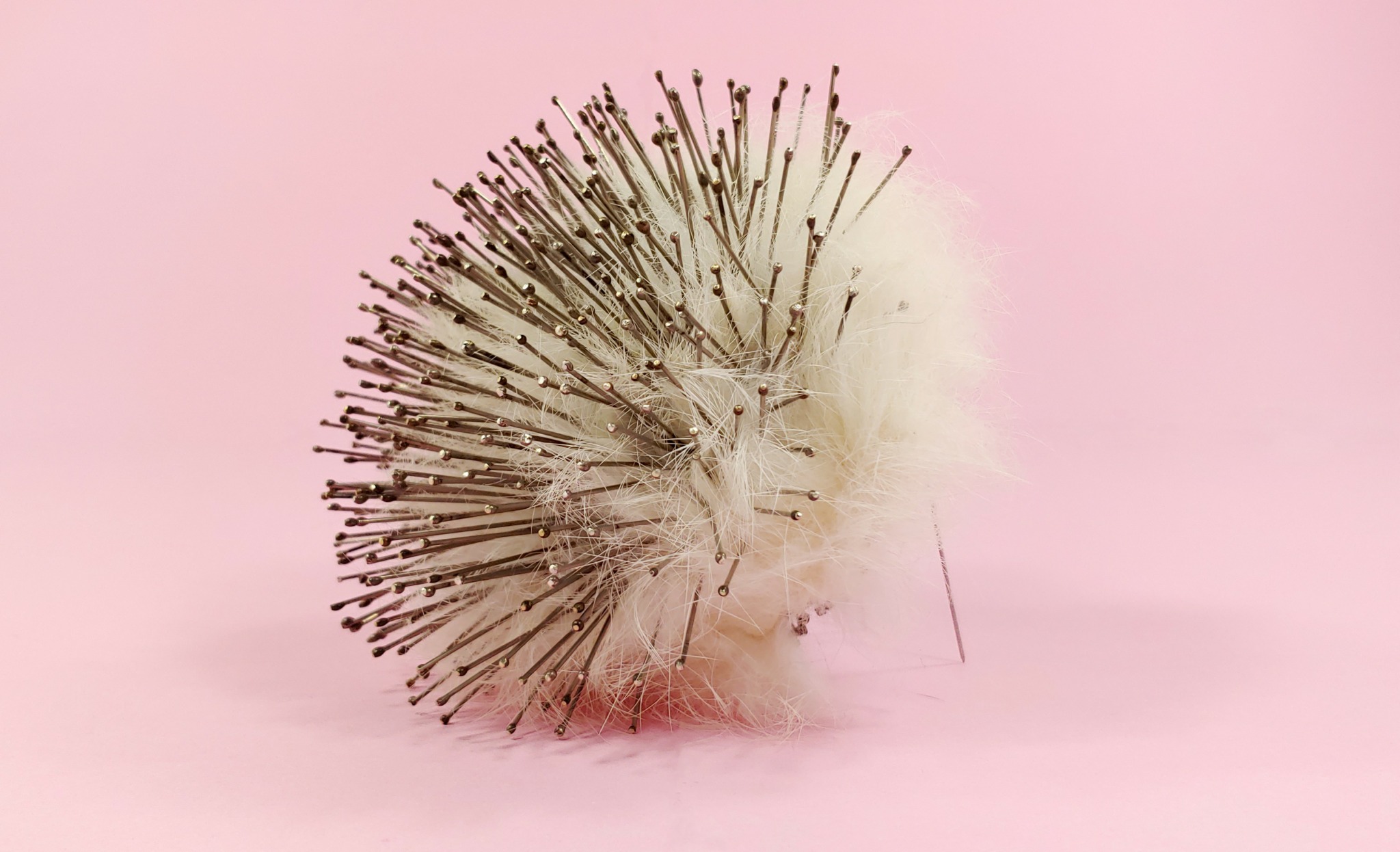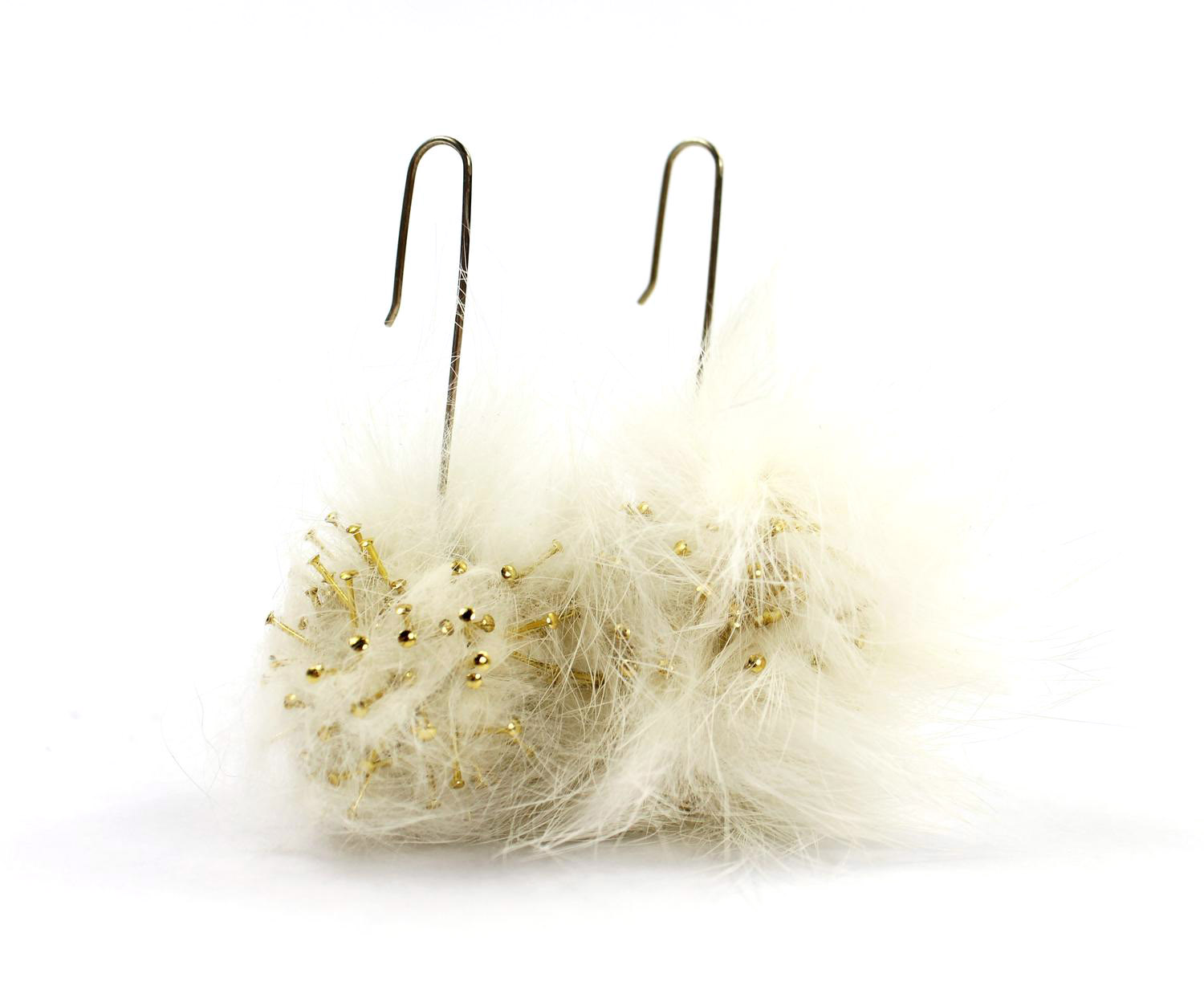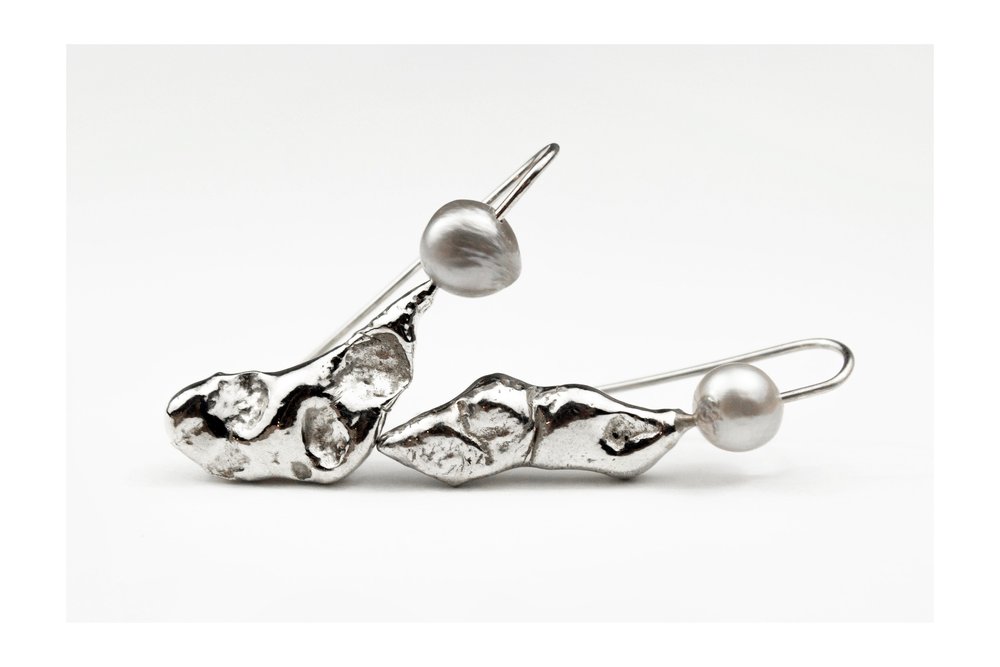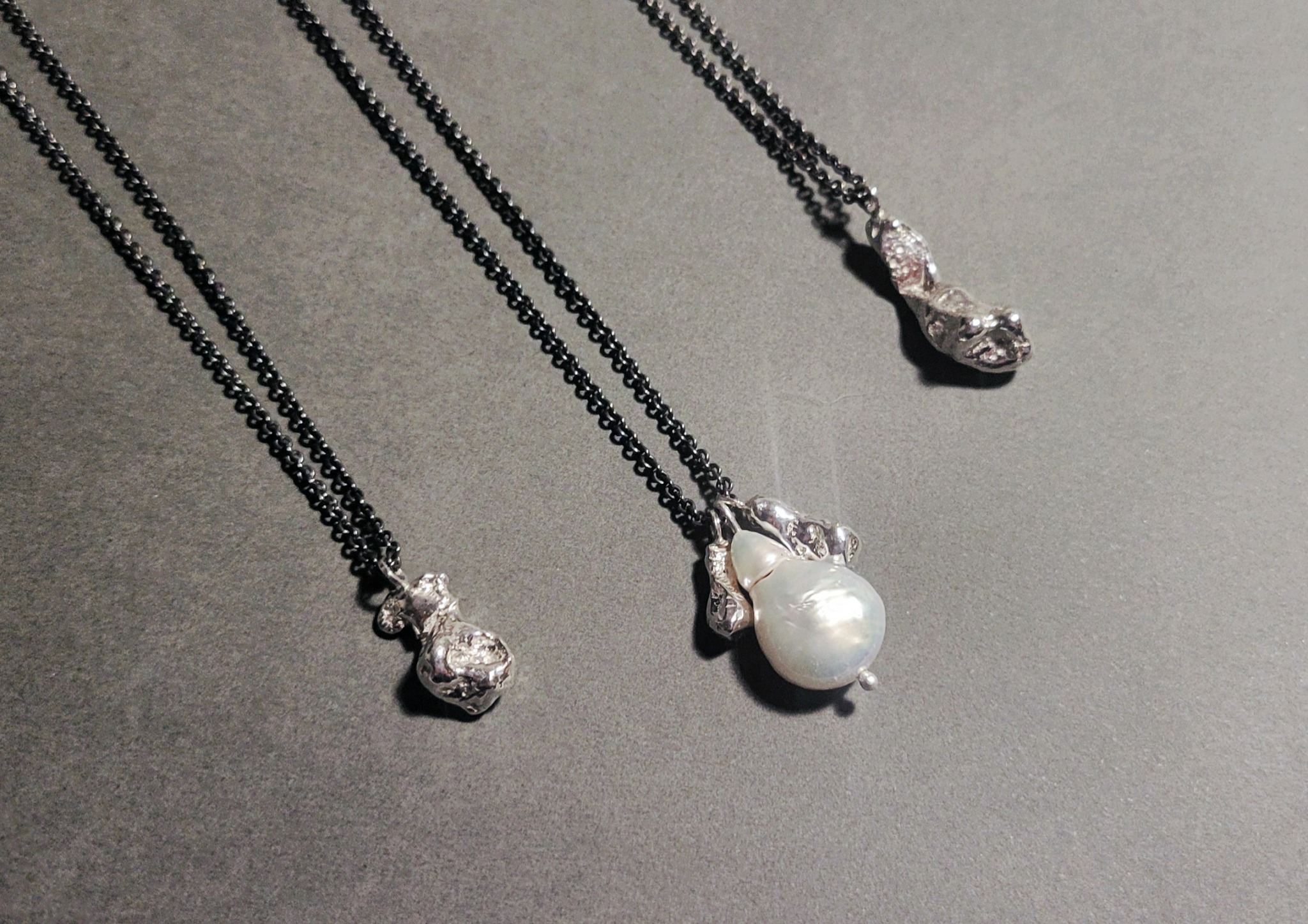We recently connected with Vivienne Varay and have shared our conversation below.
Vivienne, appreciate you joining us today. Can you tell us about a time that your work has been misunderstood? Why do you think it happened and did any interesting insights emerge from the experience?
About ten years ago during my graduate studies, I sat down with a visiting art critic and explained the symbolism and material choices of my jewelry work. He sat there silently for a minute before stating, with repulsion, “This is very conceptual…for jewelry.” He had no interest in discussing adornment as an art form, and I had no interest in continuing the conversation. This was the first time I directly received this sentiment about jewelry, but it hasn’t been the last.
Lately, I’ve been facing a recurring issue—people not fully understanding the range of work, skills, techniques, and ideas that artists are capable of in contemporary art jewelry and the decorative crafts. People often assume my abilities are limited to the work I make as an artist. There are many roles that jewelers take on: from fabrication, design, casting, digital modelling, and scholarly work.
The skills I have developed over the last decade are not always present in my portfolio or the work I do. I consider myself to be adaptable and experimental as a contemporary art jeweler, artist, and educator. My creative practice includes several different materials and processes, and my studio is the one place in which I explicitly do not follow any rules. Because of this, my work takes many different forms and what’s most important is expressing the conceptual ideas behind the work.
Last year, I began teaching full time as a lecturer in a digital design and humanities program—a side of me that’s not reflected in my jewelry work. I teach a broad range of courses that include design, animation, social media, research, and marketing, When I first told my peers about the opportunity, they were surprised to find out that I knew how to 3D model, do graphic design, and understood media culture. It surprises people when they discover the different skills I have. Sometimes, not showing an expertise in a specific technique or process leads to misunderstandings between me, my work, and how I’m perceived.
Over the past year, I’ve listened to numerous people voice that jewelry, ceramics, and functional objects do not belong in the realm of fine arts. This is an old and ongoing conversation. I consider myself and others in this field as fine artists, and that’s all that mattered. What I’ve come to realize is that I need to find ways to advocate for other creators who align their work in the decorative and functional arts. My goals are to spend more time writing about the field and finding ways to communicate and share with others the value that these artists bring, in order to break down the barriers of misunderstanding.

Awesome – so before we get into the rest of our questions, can you briefly introduce yourself to our readers.
My creative journey began in a high school darkroom. I envisioned myself as a professional photographer, and for two years, I pursued learning everything I could about photography. I decided to go to college with a focus on becoming an artist, but I quickly discovered that photography wasn’t my preferred medium of expression.
During a color theory class at Arizona State University, one of my classmates pulled out a nameplate she had made in an introductory metals course. I had no idea how she had created this object, but I was determined to take a class and find out. Metals became my focus because it gave me the opportunity to create intimate objects that reflected my emotions. It is difficult, time-consuming work, and I enjoyed the challenge of working with this medium. However, I knew that one year in the program wasn’t enough. I wanted to learn more, so I decided to attend graduate school at the University of Georgia to develop myself as an artist and learn more about contemporary art jewelry.
I have no interest in making a living off my work and prefer to support my art through other professional roles. Doing this allows me the freedom to make what I want, when I want. Learning to be adaptable has become crucial as a professional artist. Over the years, I’ve taken on many different roles, such as makeup artistry, corporate management, and now teaching. What has always helped me succeed is my ability to communicate and creatively solve problems.
In July, I started my own small business, Vialette the Fifth. This jewelry line is inspired by my travels to Italy, and I’m creating experimental baroque jewelry meant for everyday wear. The creation of my small business was partly inspired by a trip to Palo Alto, California, over the summer to visit an artist friend. We talked about the importance of wearing jewelry every day, the value of precious metals, and why comfort and craftsmanship matter. We also discussed how jewelers make a living and the struggles of entrepreneurship.
Vialette the Fifth is still in its early stages, and I’m learning how to run the business at a pace I’m comfortable with along with teaching full time at Washington State University. My goal is to create one-of-a-kind pieces focused on individuality and comfort. Jewelry is a wonderful way for people to express themselves, and my jewelry is meant to make the wearer feel bold and powerful.

Have any books or other resources had a big impact on you?
During grad school, my mentor assigned two books for us to read and discuss during our seminar. The two books that have had the biggest impact on my philosophies as both an entrepreneur and artist are The Creative Habit by Twyla Tharp and Creativity: Flow and the Psychology of Discovery and Invention by Mihaly Csikszentmihalyi. Even though these books aren’t specifically focused on entrepreneurship, they’ve deeply shaped the way I approach creative thinking and problem-solving in everything I do. For me, the principles in these books go beyond the art studio. They focus on how to apply an adaptable mindset needed to succeed in any undertaking.
The Creative Habit is all about discipline and finding ways to consistently sustain creativity. Tharp’s focus on routine, structure, and habit-building really helped me understand how to set up my day-to-day work as an artist and entrepreneur. It’s not just about waiting for inspiration to strike, but about putting yourself in a position where creative thinking becomes a habit. That lesson has been crucial in how I run my business and maintain my creative spaces.
These books have taught me to see challenges as opportunities to innovate and grow. The ability to approach experiences from new angles and find solutions in ways I never have before. I’ve read both books multiple times now, and I still find myself going back to them. They are always the first books I recommend to my students who are serious about pursuing a creative career, because understanding how to think creatively is a skill that applies to every aspect of what we do as creative professionals.

What can society do to ensure an environment that’s helpful to artists and creatives?
There are numerous ways society can support artists. For me, the most important is changing the perception of who artists are and what they do. Artists work just as hard, are just as intelligent, and contribute as much as professionals in any other field. Creativity is essential in every industry, whether it’s how we communicate, express empathy, or innovate to create change. If we continue to undervalue artists, the arts and creative pursuits will keep deteriorating.
Protecting the arts in academia and institutions is also fundamental. Many arts organizations are closing their doors, primarily due to declining enrollment and a lack of financial support. People don’t always understand how creatives make a living, and we’ve often been uncomfortable addressing the need for artists to pivot and adapt professionally. Having these conversations and finding solutions to shift people’s perspectives is key to increasing support in the spaces that train and develop artists.
The best way to support the arts is by staying engaged, getting involved, and making financial contributions. Buying artwork, attending shows, or supporting arts organizations helps artists continue their work. Even if you’re unable to provide financial support, you can still help by sharing, discussing, and promoting individuals and organizations that matter to you and your community.
As artificial intelligence and technology advances, it’s more important than ever to recognize the value of human invention and expression. As white-collar and scientific work becomes more streamlined by technology, creative work will become even more essential.
Contact Info:
- Website: https://www.viviennevaray.com and https://www.vialettethefifth.com
- Instagram: @viviennevaray and @vialettethefifth


Image Credits
Vivienne Varay


